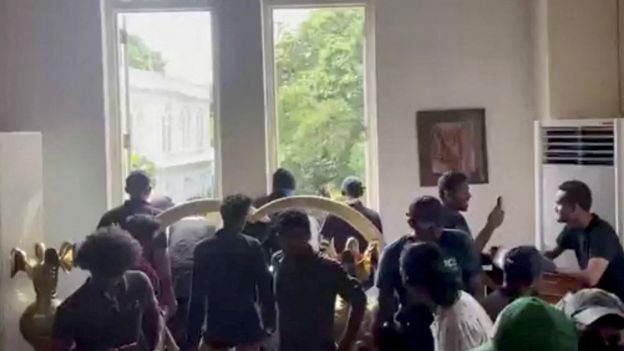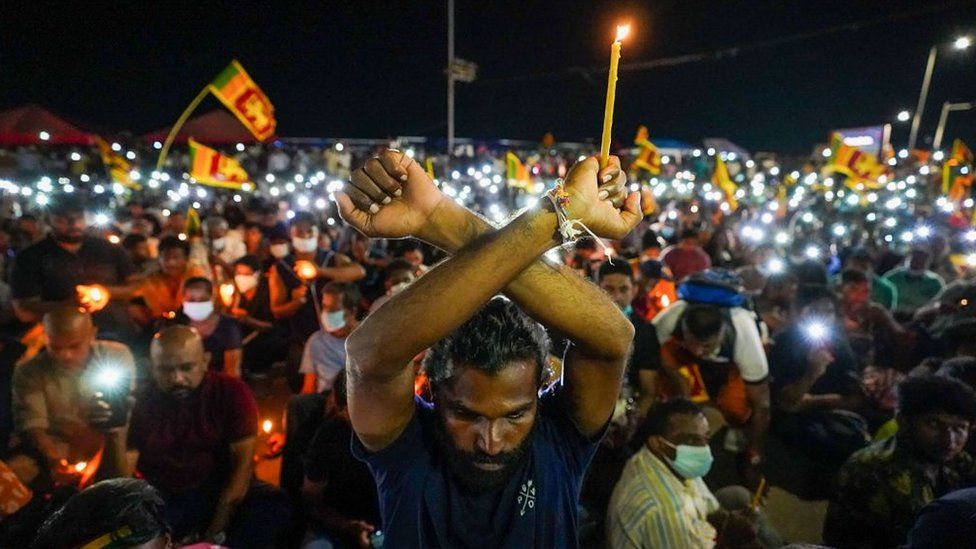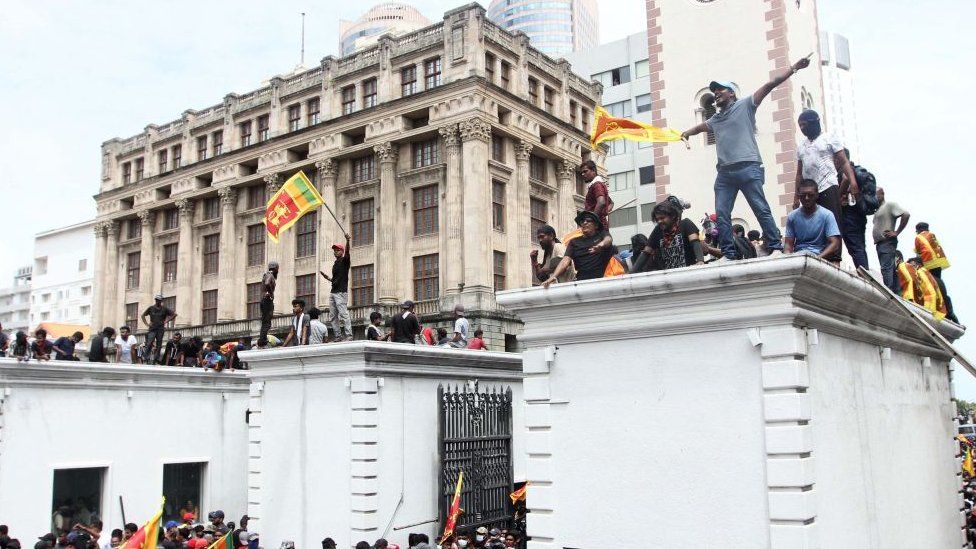
Udeni Kaluthantri, a 54-year-old port worker, became an overnight sensation last year for reasons that had nothing to do with his job.
Days after protesters stormed the presidential palace in the Sri Lankan capital Colombo, a video surfaced of Mr Kaluthantri lounging on a bed draped with the presidential flag.
Pictures of young men jumping into the pool inside the palace and bouncing on the presidential four-poster bed had already gone around the world. Mr Kaluthantri’s video joined all of the other imagery as poetic proof of how millions of Sri Lankans were fed up of what they regarded as inept and corrupt governance under President Gotabaya Rajapaksa.
Soon after, Mr Rajapaksa fled the country, resigning days later. It was hailed as a massive win for an unprecedented people’s movement but one year later, Sri Lanka looks quite different.
The people’s struggle
In early 2022, inflation in Sri Lanka skyrocketed as foreign reserves emptied and the country ran short of fuel, food and medicine. Residents experienced up to 13-hour power cuts in what was the worst economic crisis the country had faced since independence.
Many held then president Mr Rajapaksa and his family responsible. While his disastrous economic policies led to the shortfall in foreign currency, the Rajapaksa family was also accused of corruption and siphoning public money. But the Rajapaksas deny any wrongdoing and place blame elsewhere for the crisis: the sharp drop in tourism revenue because of the pandemic and the high cost of fuel after Russia invaded Ukraine.
I was in Colombo last year as crowds gathered at Galle Face Green, a popular beach-facing public space in Colombo. The demonstrations continued day and night, the crowds swelling in the evenings with families, students, priests, nuns, clerics and monks. Driven by the rallying cry “Gota go home”, the protests engulfed the country, uniting Sri Lanka’s three major communities – Sinhalese, Tamils and Muslims – for the first time.
This video can not be played
To play this video you need to enable JavaScript in your browser.
Weeks later, they culminated in extraordinary scenes where protesters stormed the presidential palace, with the intention of forcing Mr Rajapaksa out of power. Mr Kaluthantri was among them. Mr Rajapaksa was not at the palace when the protesters broke in – so they made themselves at home, and took away all sorts of “souvenirs”, from bed sheets to books.
“I took the presidential flags away because I thought Mr Rajapaksa wouldn’t be able to act as president without those official symbols,” Mr Kaluthantri said. Sri Lanka’s presidential flags are unique to each president, and the design changes every time a new leader assumes office.
Five days later, Mr Rajapaksa fled the country and sent his resignation from Singapore. This was seen as a victory for the “aragalaya” or “people’s struggle” as the movement was called.
The decline of the Rajapaksa family would have been unthinkable a few months before. The politically powerful family was popular for crushing the Tamil Tiger separatists in May 2009 and ending the country’s 25-year civil war.
But now, a year on, it is the protesters who are in trouble, while the Rajapaksas and several other politicians singled out by public anger are back in the country – and in positions of power.
What happened?
The crackdown
After Mr Rajapaksa fled the country, veteran opposition politician, Ranil Wickremesinghe was elected as the new president in a parliamentary vote. He was backed by Mr Rajapaksa’s party, which had a landslide majority.
Hours after Mr Wickremesinghe was elected, the military was deployed to clear the crowds at Galle Face. Dozens of soldiers swooped on the site, dismantling tents and other belongings of the demonstrators.
Mr Kaluthantri himself surrendered to police and spent 21 days in custody on charges of desecrating the presidential flag. The case against him continues. “I have no regrets. I did it for the country and people,” says Mr Kaluthanthri, who was suspended from his job for two months.
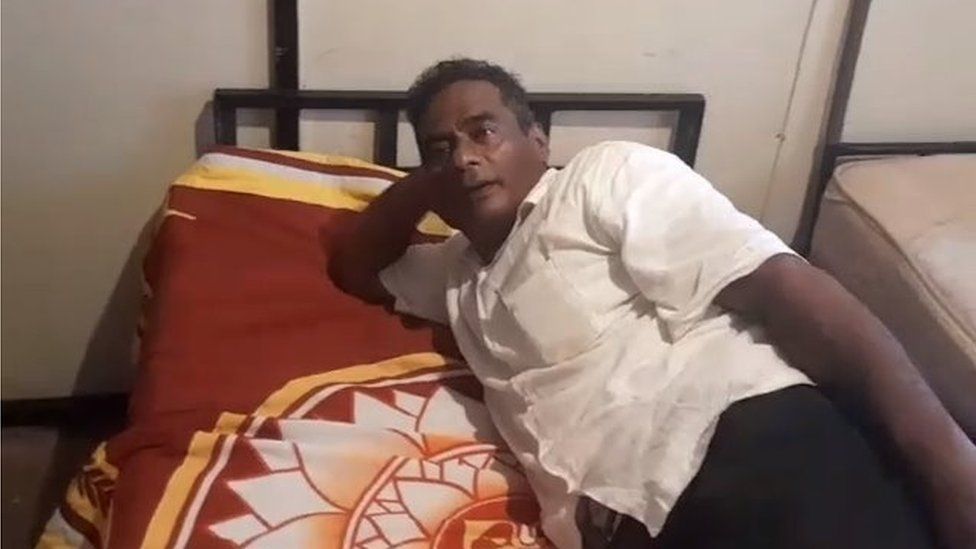
His only regret: “We managed to force Gotabaya Rajapaksa to resign, [but] we were not able to introduce a new political culture.”
With Mr Rajapaksa gone and the new government taking steps to ease the acute shortage of fuel and other essentials, many protesters resumed normal life. The authorities then used force – deploying all the legal and punitive powers at their disposal – to clear the last, most committed of the demonstrators from the protest sites.
Weeks later, Mr Rajapaksa and his brother Basil, who had also fled the country, returned.
The former president is now living in a high-end government bungalow, while many of the members in his cabinet have been reinstated.
The silenced voices
One of those who faced the full wrath of the state was Wasantha Mudalige, a left-wing activist and former convenor of the Inter-University Students Union. He was at the forefront of the protest movement.
Mr Mudalige was arrested under the draconian Prevention of Terrorism Act (PTA) and spent more than five months in prison.
“I could have spent more time in prison if not for the courts. The government cannot suppress protests without solving people’s issues.” Mr Mudalige says.
A court in Colombo dismissed the terror charges against Mr Mudalige in February and ordered his release. The judge said the authorities had misused the act.
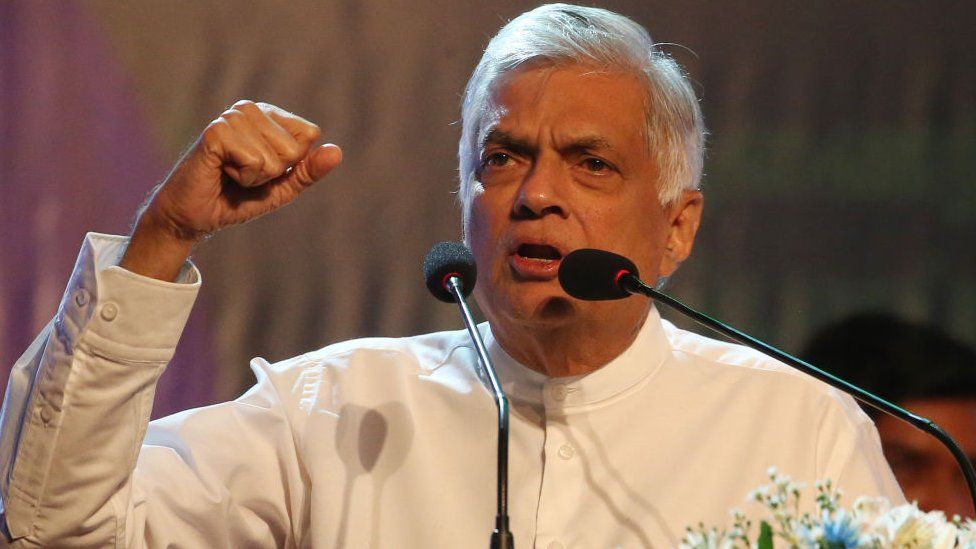
Many other protesters have also been charged under various laws, and some have been sentenced to prison. Yet many of the protest leaders look back at the movement with pride.
Swasthika Arulingam, a human rights lawyer and a prominent activist, says it was a historic, unorganised movement that attracted people from all walks of life.
“But we have not achieved the long term goals of Aragalaya – like… no change in the political system, no accountability on corruption, and those who are responsible for stealing people’s money are still in power,” she says.
Although the protests have gone silent for now, some protesters like Samadhi Brahmananayake argue that the agitation showed what people’s power can do.
“The protest gave us hope and confidence. We have realised what we can achieve collectively. Several young people now want to become politicians. We have to work towards political change,” says Ms Brahmananayake.
Mr Wickremesinghe’s government secured a $2.9bn dollar bailout from the International Monetary Fund in March. This has enabled Colombo to reach out to other international lenders to kickstart the economy, and find enough dollars to supply fuel, food and cooking gas.
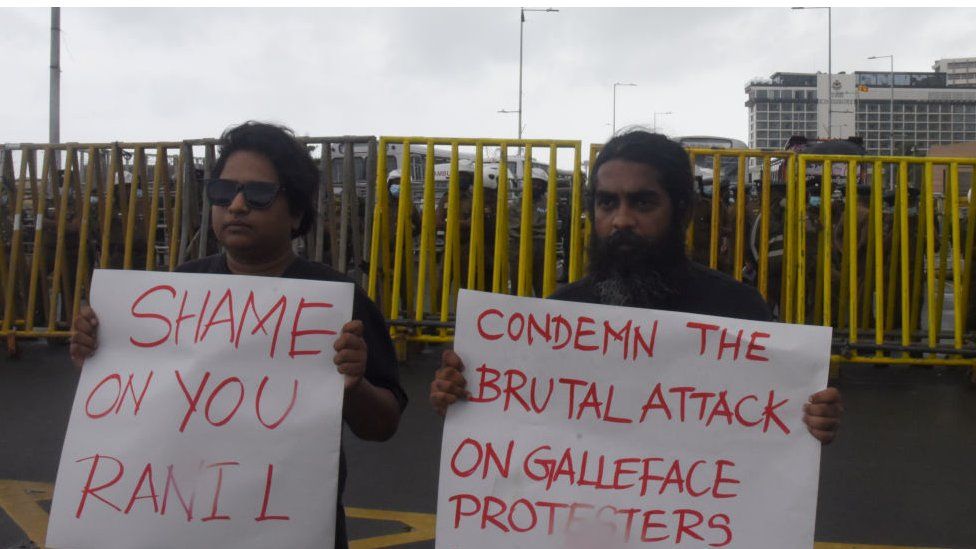
With tourism and remittances from Sri Lankan workers abroad picking up again, the country is clawing its way back but still has a mountain to climb.
Sri Lanka’s total debt, both domestic and foreign, stands around $80 billion and it will be a challenge to repay the loans. Colombo is negotiating with creditors to agree a debt restructuring programme by September.
The government is calling for a 30% write-off in investors’ capital in dollar-denominated bonds. But opposition leaders say this could have an impact on the pension funds of Sri Lankan workers.
The proposals have also sparked concerns among many Sri Lankans and some warn against taking the current calm for granted.
“The country continues to be in a state of economic crisis,” says Ms Arulingam. “In addition to the spiralling cost of living, now there are worries over retirement savings. If people’s living conditions do not improve, they may take to the streets again.”
You might also be interested in:
This video can not be played
To play this video you need to enable JavaScript in your browser.
-
-
9 July 2022
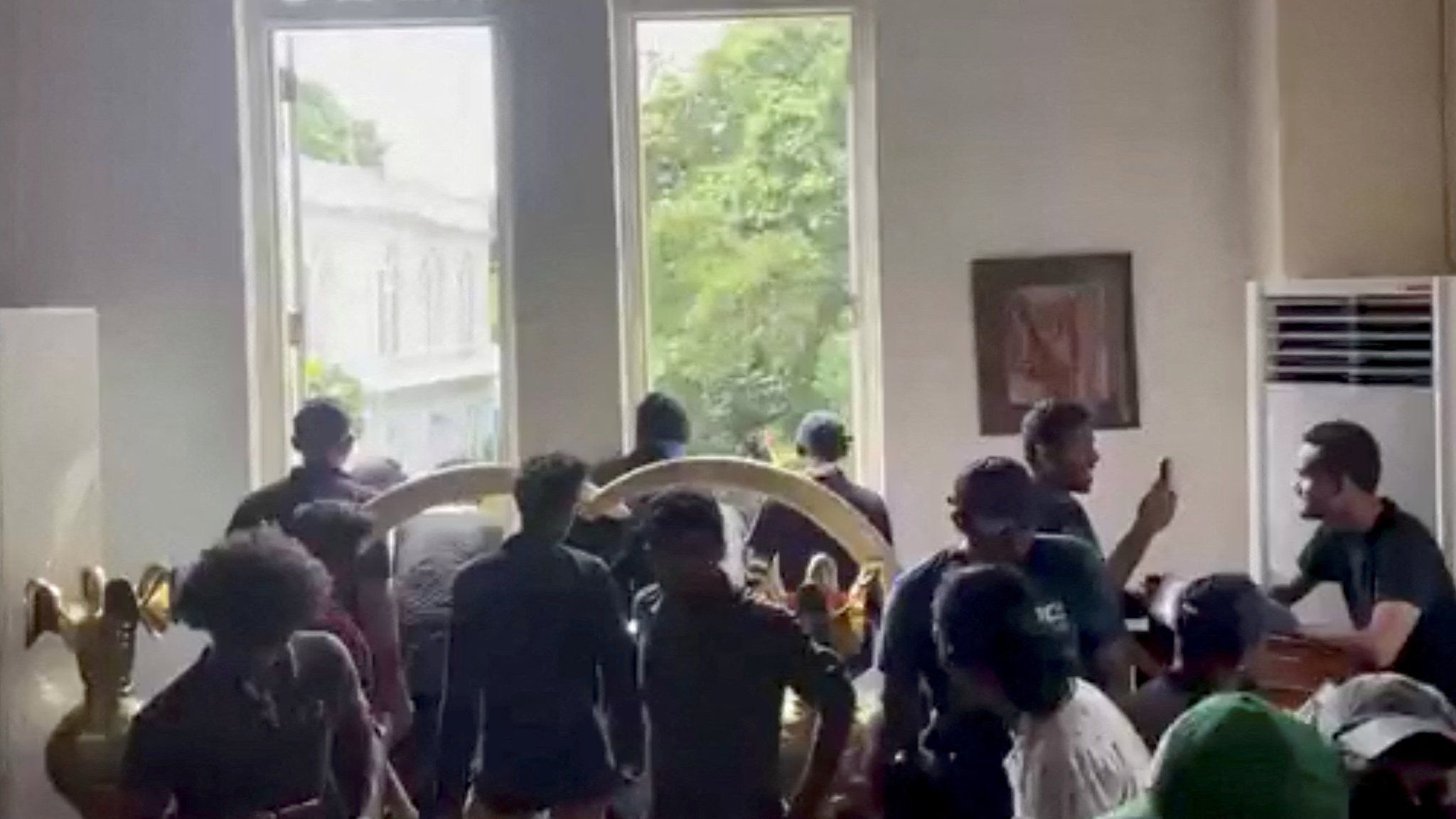
-

